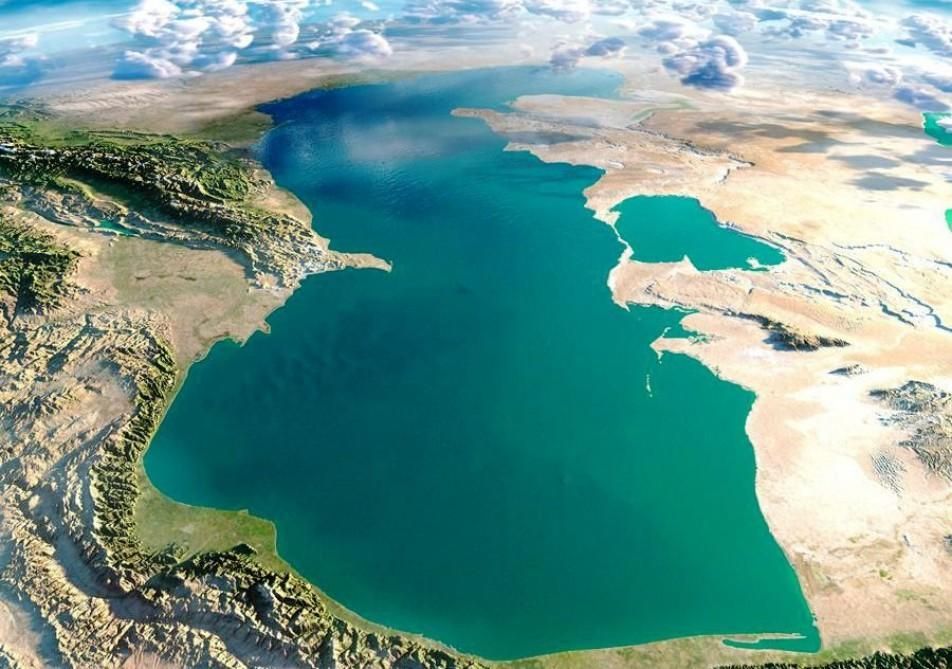News of the CIS countries24.06.2022
Caspian Sea has great wind energy potential

QAZAQ GREEN. Azerbaijan aims to increase the share of renewable energy sources in the installed capacity of electricity from 16.5 to 30 percent by 2030. The country’s large number of sunny and windy days creates numerous opportunities for the development of alternative and renewable energy sources. In this context, it is worth talking about the Caspian Sea, AzerNews reports.
The Caspian Sea is famous not only for its oil and gas resources but also for clean, alternative energy. The sea’s potential in the field of renewable energy is much greater than the total energy potential of Azerbaijan in terms of other types of alternative sources. It has great wind power potential for electricity production, estimated at 157 GW. Thus, the sea ranks second in the world for its wind energy potential.
The rich energy resources of the Caspian Sea are an important source for the development of not only the hydrocarbon industry but also the green energy sector.
Earlier this year, Azerbaijan and the World Bank discussed a preliminary draft of the country’s offshore wind roadmap. They discussed various scenarios for utilizing the vast wind energy potential in Azerbaijan’s Caspian Sea sector. The roadmap will help attract private investment in the field and increase energy exports in the future.
At the same time, in April this year, Azerbaijan and the International Finance Corporation (IFC) signed a memorandum of understanding on cooperation in the use of offshore wind energy resources. According to the memorandum, cooperation with the IFC envisages initially an assessment of the potential of offshore wind power in Azerbaijan and the roadmap development. In the next stages, it envisages the tender management related to relevant offshore projects, the definition of partnerships with the private sector, and the implementation of auxiliary investments.
Both WB and IFC expressed their readiness to support the development of wind energy in the sea and attract investors to this field.
Moreover, on the sidelines of Baku Energy Week earlier this month, Azerbaijan’s Energy Ministry and the United Arab Emirates’ Masdar company signed an implementation agreement on the evaluation, development and implementation of offshore 2 GW integrated wind and energy hydrogen. The agreement includes complex measures to create wind power for production and export purposes, decarbonization, hydrogen production, and export.
It is worth noting that geographically, it is not a sea, but rather the world’s biggest lake, covering 371,000 square kilometers. It is surrounded by Kazakhstan from the north to the east, Russia from the north to the west, Azerbaijan to the southwest, Iran to the south, and neighboring corners and Turkmenistan along the eastern coast’s southern portions.
In 2018, the Caspian Sea’s legal status was finally confirmed. At the Aktau conference in August 2018, the Caspian Sea littoral states ratified an agreement on Caspian Sea status. Because of its abundant natural resources, coastal states had difficulty striking an agreement. Despite signing the treaty in 2018, it is not yet in force due to Iran’s lengthy ratification procedure.
The renewable energy potential of the country is estimated to be 26,940 MW, which includes 3,000 MW of wind power, 23,040 MW of solar power, 380 MW of bioenergy potential, and 520 MW of mountain river potential.
Samruk-Energy expands strategic cooperation with leading Chinese energy companies
Chinese energy developers build solar power plant in Kazakhstan's Mangistau region
Balcony solar power systems gain ground in Lithuania
JA Solar to supply 1GW of PV modules for Masdar’s solar projects in Azerbaijan
Moldova to integrate floating solar and wind power into hydropower infrastructure
World's most powerful direct-drive floating wind turbine unveiled in China
California becomes world’s largest economy powered by two-thirds clean energy
Mobarakeh solar breakthrough ushers new era for Iran industry
Norway unveils floating greenhouse that produces food, fish, and clean energy
New additive strategy enhances efficiency of bifacial perovskite solar cells
India tests a totally-new source of energy
Kazakhstan and UAE reaffirm strategic energy partnership with 1 GW wind project
Solar becomes EU’s top power source for the first time ever
How decentralised renewables transform healthcare services in rural Zimbabwe
Chinese company to build solar and wind power plants in Kyrgyzstan
Seaturns raises €2.45 million to industrialize wave energy technology and accelerate global rollout
Trump signs executive order to end subsidies for wind and solar energy
Uzbekistan's solar and wind power plants generate 5 Billion kWh since beginning of the year
Green Corridor Alliance JV registered in Baku to promote green energy development in Central Asia and the South Caucasus
In the EU renewable energy supply grew by 3.4% in 2024











